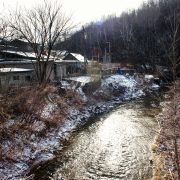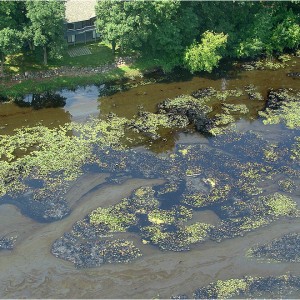EPA Releases Draft of Clean Water Strategy for Public Comment
The EPA seeks stricter pollution standards and a national water quality assessment.
The U.S. Environmental Protection Agency released a draft version of its clean water strategy on Friday and is allowing public comments on the document through September 17.
The draft document, “Coming Together for Clean Water,” outlines a broad strategy for improving water quality. The EPA plans to strengthen water pollution regulations under the Clean Water Act and complete a comprehensive scientific assessment of the country’s water bodies.
Though it lacks quantitative targets, the document suggests stricter pollution standards pertaining to the National Pollutant Discharge Elimination System and an expansion of stormwater discharge permits.
Other areas of focus include minimizing loss of aquatic life from cooling water intake structures, evaluating the effects of mining on water supplies, protecting rivers and lakes from invasive species as well as reducing sewer overflows. To gain a better baseline understanding of national water quality, the EPA will also complete a series of five Aquatic Resource Surveys in the next several years.
The Chesapeake Bay has been identified as an area of particular concern because of President Obama’s Executive Order calling on the federal government to lead the bay’s restoration effort. Possible actions include stronger total maximum daily load regulations, markets for water quality trading and regulations for reducing excess nutrient runoff.
The EPA also identifies the Great Lakes and the Gulf of Mexico as other water bodies of national significance and would like to apply a similar program in those areas.
Brett writes about agriculture, energy, infrastructure, and the politics and economics of water in the United States. He also writes the Federal Water Tap, Circle of Blue’s weekly digest of U.S. government water news. He is the winner of two Society of Environmental Journalists reporting awards, one of the top honors in American environmental journalism: first place for explanatory reporting for a series on septic system pollution in the United States(2016) and third place for beat reporting in a small market (2014). He received the Sierra Club’s Distinguished Service Award in 2018. Brett lives in Seattle, where he hikes the mountains and bakes pies. Contact Brett Walton









If EPA indeed wants a better clean water strategy, it should first acknowledge that it never implement the Clean Water Act in the first place, by ignoring nitrogenous (urine and protein) waste in sewage, while this waste besides exerting an oxygen demand (just like fecal waste) also is a fertilizer for alga growth and thus contributes to eutrophication, often resulting in dead zones. All this was caused by a faulty application of an in 1920 developed water pollution test. (www.petermaier.net)
In 1987 of the record EPA stated that this test and the regulations using this test, should be corrected, but at the same time also claimed that this was impossible as it would require a re-education and re-tooling of an entire industry that is happy with the status quo. Without correcting this essential test, nothing will change and our water sadly will only deteriorate further.